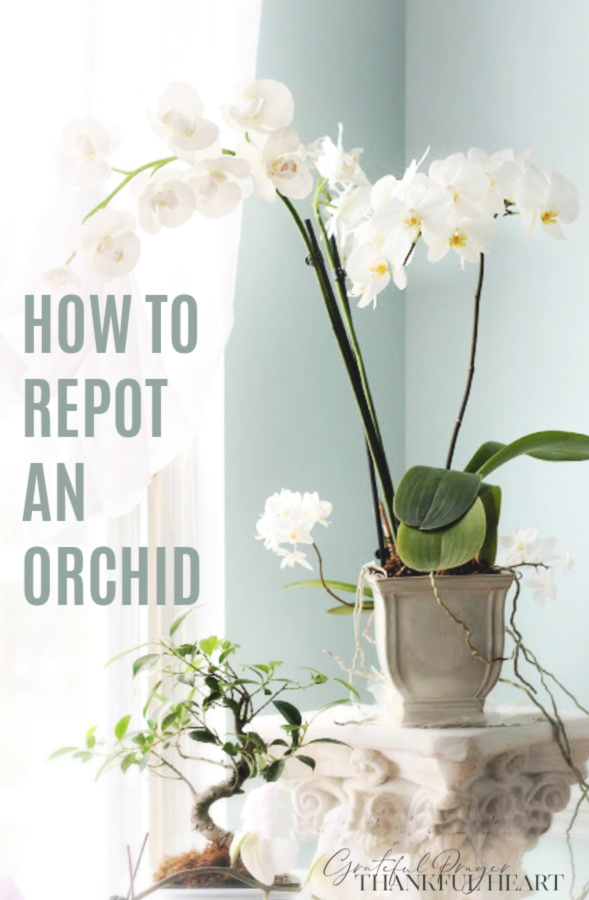 If you have had an orchid for a while it might be looking a bit straggly. Repotting an orchid is different from other houseplants and you might be feeling a little uncertain as to how to go about it. This easy step-by-step how-to will show you how.
If you have had an orchid for a while it might be looking a bit straggly. Repotting an orchid is different from other houseplants and you might be feeling a little uncertain as to how to go about it. This easy step-by-step how-to will show you how.
Grateful Prayer Thankful Heart is a participant in the Amazon Services LLC Associates Program, an affiliate advertising program designed to provide a means for us to earn fees by linking to Amazon.com and affiliated sites. We will only recommend products we use, love or think are informative and helpful.
This is a Phalaenopsis orchid. It is sometimes called a moth orchid and is easy to grow, requires very little care, and blooms easily with flowers that can last up to three months! It was a floral centerpiece at the wedding of a friend’s daughter and gifted to me when the reception was over.
 This orchid blooms a least twice a year and the flowers last for two to three months with short periods of dormancy providing beautiful displays of bright white flowers. I actually had to wait a couple of months for the last blooms to fade before repotting.
This orchid blooms a least twice a year and the flowers last for two to three months with short periods of dormancy providing beautiful displays of bright white flowers. I actually had to wait a couple of months for the last blooms to fade before repotting.
 Preparing to repot my orchid I checked back on photos of the wedding where I received the orchid. How surprised I was to learn that this orchid is now ten years old! No wonder it was looking so bedraggled! When I look at the remains of old growth below the healthy leaves, still in its original container and pot, I wonder how it was able to send up flowers at all!
Preparing to repot my orchid I checked back on photos of the wedding where I received the orchid. How surprised I was to learn that this orchid is now ten years old! No wonder it was looking so bedraggled! When I look at the remains of old growth below the healthy leaves, still in its original container and pot, I wonder how it was able to send up flowers at all!
It is best to wait until after the orchid is done flowering before repotting.
How to Repot an Orchid
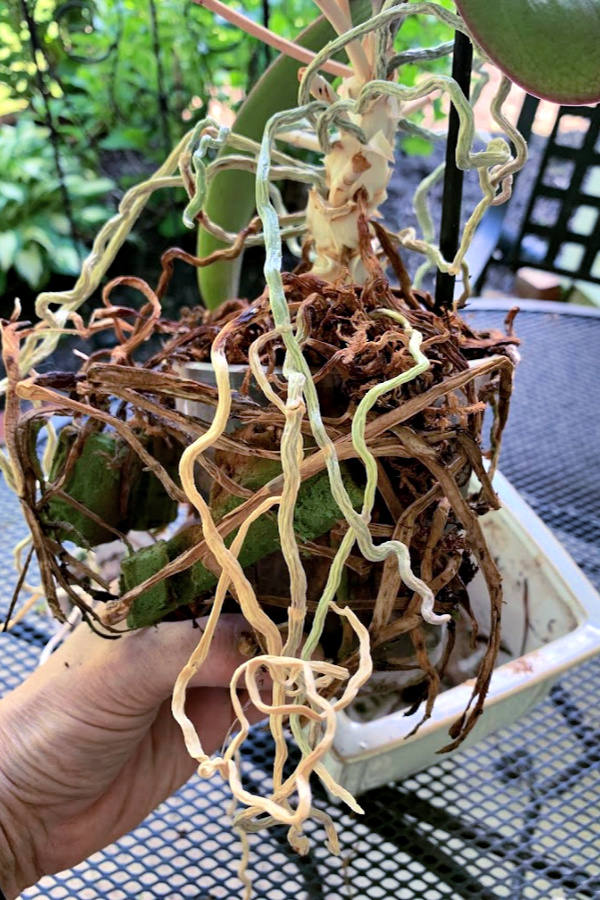 Let’s get started! Begin by lifting the orchid from its container and examine what is happening with your orchid. Here you can see healthy green roots interspersed with dead, dried roots, The green stuff is Oasis foam used to wedge the inner pot securely in the decorative container.
Let’s get started! Begin by lifting the orchid from its container and examine what is happening with your orchid. Here you can see healthy green roots interspersed with dead, dried roots, The green stuff is Oasis foam used to wedge the inner pot securely in the decorative container.
Sterile Orchid pot
 You will want to thoroughly scrub and disinfect the pot so it is rid of bacteria and other nasty stuff accumulated over time.
You will want to thoroughly scrub and disinfect the pot so it is rid of bacteria and other nasty stuff accumulated over time.
Removing the old growing medium
 It is a good idea to wear glove as you handle the orchid. Use your fingers to gently remove all of the old medium between the roots.
It is a good idea to wear glove as you handle the orchid. Use your fingers to gently remove all of the old medium between the roots.
Cut away old stems and leaves
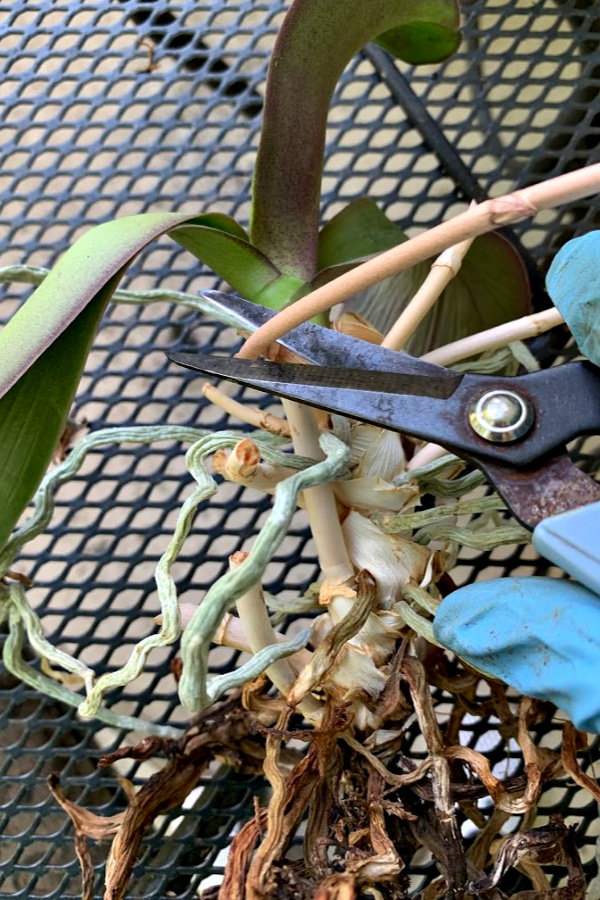 With cutters, remove any old plant stems and leaves that are looking poorly.
With cutters, remove any old plant stems and leaves that are looking poorly.
Strip away dried velamen
 Phalaenopsis are epiphytic plants. The roots on empathetic orchids are covered with a spongy tissue called velamen. This tissue absorbs water and nutrients from the air. Live roots are green and firm to the touch. You can see that many of these roots have dried up velamen. Gently strip away the dried velamen to expose the fine root inside.
Phalaenopsis are epiphytic plants. The roots on empathetic orchids are covered with a spongy tissue called velamen. This tissue absorbs water and nutrients from the air. Live roots are green and firm to the touch. You can see that many of these roots have dried up velamen. Gently strip away the dried velamen to expose the fine root inside.
Repotting an orchid
 When the orchid is cleaned up, place it into a clean container. Use a pot that has lots of holes on the bottom for water drainage.
When the orchid is cleaned up, place it into a clean container. Use a pot that has lots of holes on the bottom for water drainage.
Try Amazon Prime 30-Day Free Trial
Orchid Potting Medium
 A good medium for orchids is a blend of chunk peat, bark, hardwood charcoal and coarse perlite to provide the proper mixture of fertilizer and moisture needed to encourage plant and root growth.
A good medium for orchids is a blend of chunk peat, bark, hardwood charcoal and coarse perlite to provide the proper mixture of fertilizer and moisture needed to encourage plant and root growth.
It also helps with drainage, air flow, and root ventilation they need for health.
While holding the orchid in place with one hand, use the other to fill in with orchid bark making sure all of the spaces are filled.
 Use a stick or blunt knife, if needed to wiggle the medium into empty spaces.
Use a stick or blunt knife, if needed to wiggle the medium into empty spaces.
Watering your orchid
 Orchids require more air than terrestrial plants around their roots and that is why protecting the roots from too much water is important. Lightly water the medium and for the next month or two, water the orchid lightly as it adjusts and grows new roots.
Orchids require more air than terrestrial plants around their roots and that is why protecting the roots from too much water is important. Lightly water the medium and for the next month or two, water the orchid lightly as it adjusts and grows new roots.
How often to repot orchids
Generally orchids need to be repotted every 12-18 months or as needed to support healthy growth. The best time to repot is just after flowering, or when new, active growth appears or shortly after blooming when they send out new shoots and/or leaves and new roots begin to form.
If your orchid has tightly tangled roots, it’s been a while since you’ve repotted or your orchid’s roots are soft and brown it is time to repot.
When your orchid has finished blooming
Some think when the flowers fall from the spike that the orchid is dying. Not so! The flowers will wilt and fall off. When this happens, don’t worry, your orchid’s not dead, it’s just storing up energy to rebloom. Phalaenopsis orchids will bloom season after season when they are properly cared for and periodically re-potted in the right potting mix.
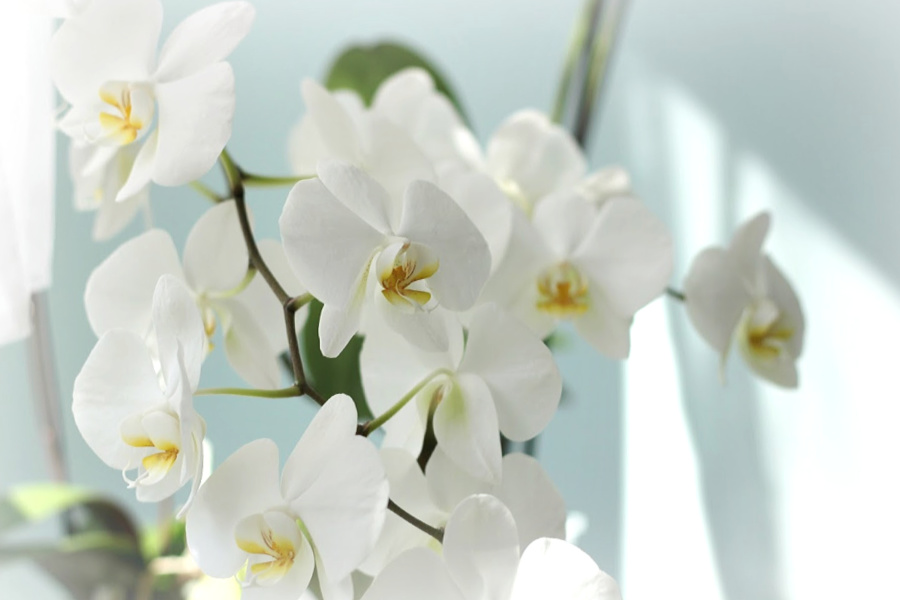 It might take some time before this repotted orchid will be giving a profusion of gorgeous blooms as it did here in this photo, but now it is much better prepared and in a healthy environment.
It might take some time before this repotted orchid will be giving a profusion of gorgeous blooms as it did here in this photo, but now it is much better prepared and in a healthy environment.
Parts of an Orchid plant
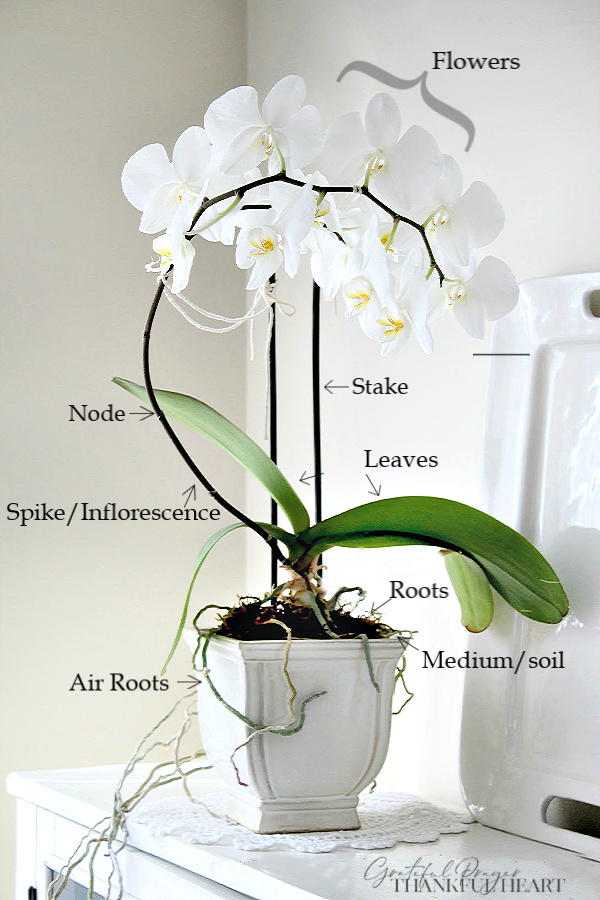
- Flowers ~ the beautiful blooms
- Spike ~ also called the Inflorescence or stem, is the flowering part of the orchid
- Stake ~ a wooden stick to support the orchid spike.
- Leaves ~ are located above the roots
- Roots ~ located below the leaves in the pot
- Air Roots ~ aerial roots above the surface of the growing medium
- Medium ~ The material added to an orchid’s container, which can range from varieties such as soil to bark.

- Petals ~ part of the orchid bloom.
- Sepal ~ The outer segments on an orchid flower. Similar to petals, sepals are the three smaller segments of the flower that create a triangular shape.
- Column
- Throat ~ The inner portion of a tubular orchid lip.
- Lip ~ The part of the flower that is almost completely divided from the rest of the flower. It is connected by the column. The lip is specialized to aid in pollination.
Orchid Care
Light
Orchids like bright, indirect light. An east-facing window is best. If placed in a western or south-facing light be sure it is indirect. A north-facing exposure probably won’t provide enough light .
Temperature
Orchids do well in normal home temperatures; about 70 to 80 degrees during the day and above 60 degrees at night.

You might also like…
Try Audible and Get Two Free Audiobooks
 Our Newsletter is published once every three weeks. Each issue is timely and helpful, jam-packed with food, crafts, occasional DIY, gardening and faith resources. Relevant and seasonal posts to inspire and guide you with current trends. Available only to those who request it, so please accept our invitation to stay connected and join the Grateful Prayer Thankful Heart community. Just click the subscribe button below.
Our Newsletter is published once every three weeks. Each issue is timely and helpful, jam-packed with food, crafts, occasional DIY, gardening and faith resources. Relevant and seasonal posts to inspire and guide you with current trends. Available only to those who request it, so please accept our invitation to stay connected and join the Grateful Prayer Thankful Heart community. Just click the subscribe button below.
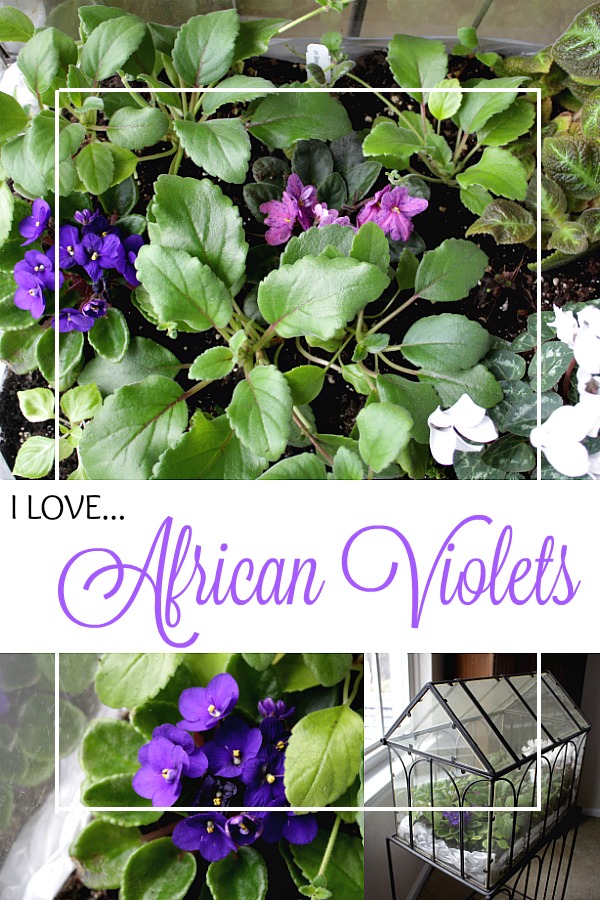
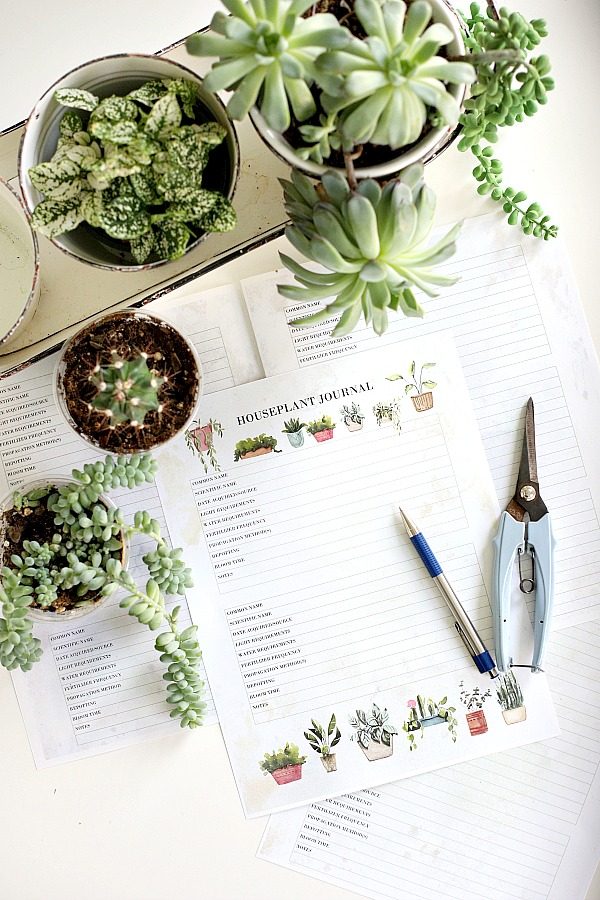



Very helpful information. Thank you for sharing.
Hope you have a blessed Summer!